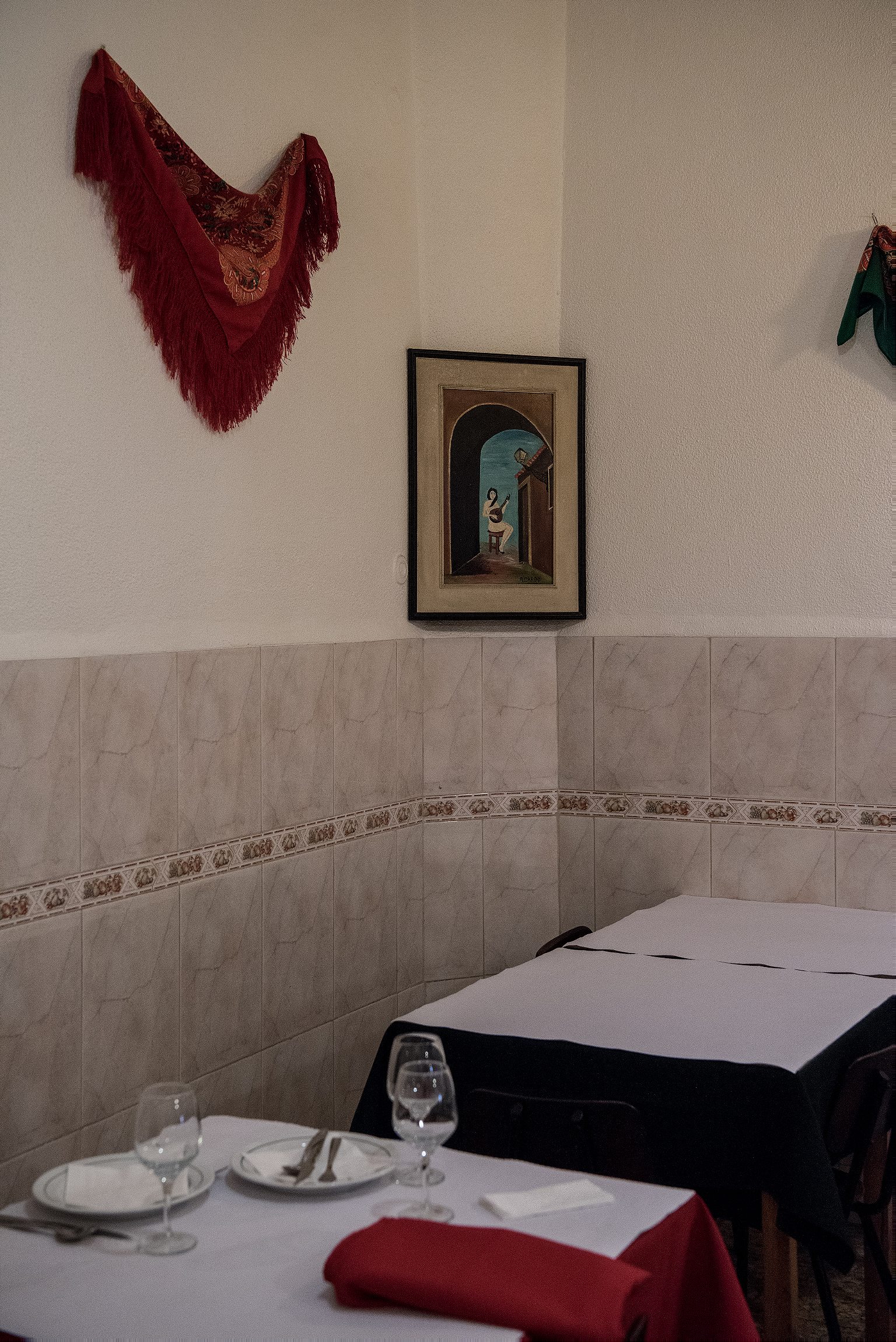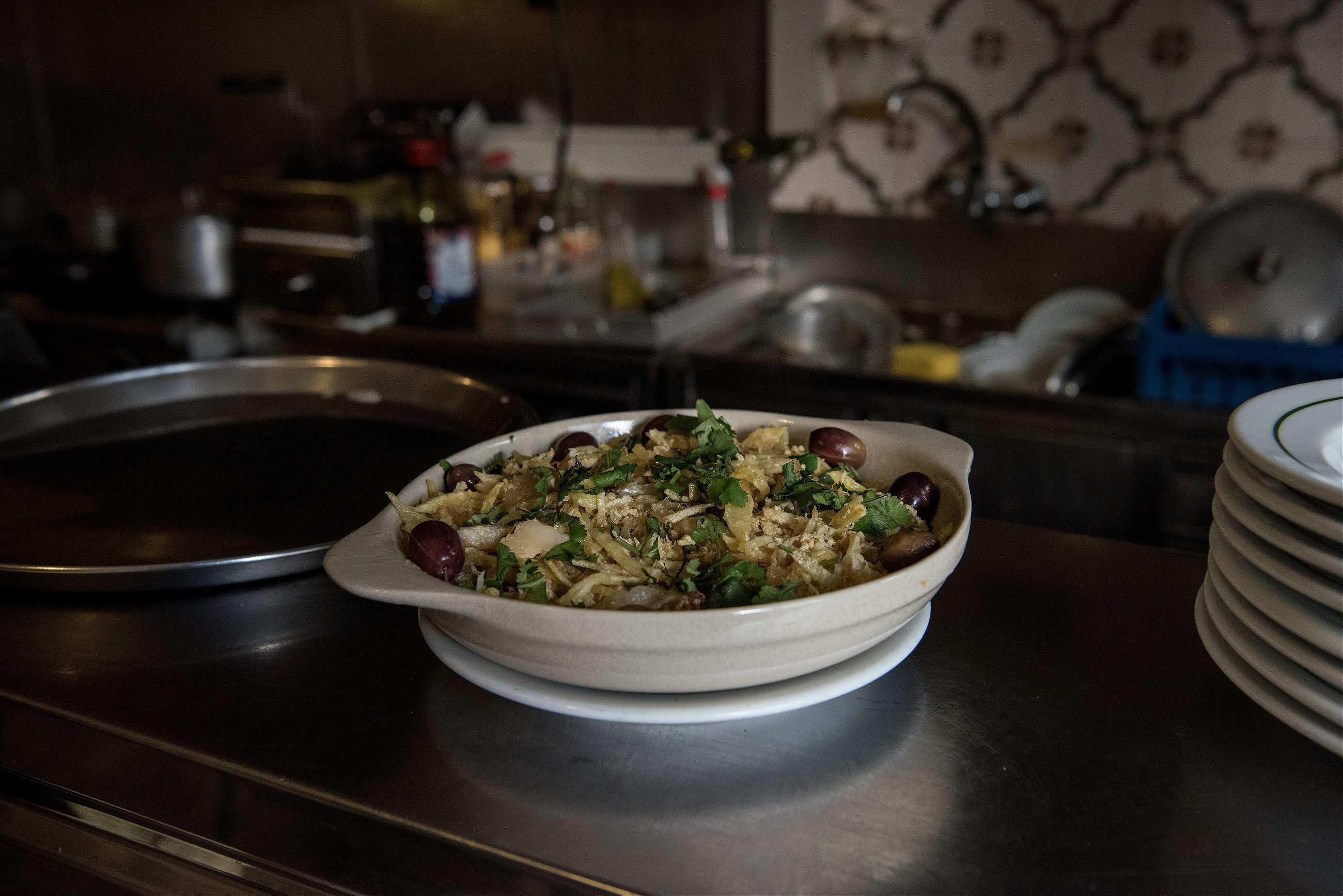A Lisbon native on her favorite way to eat Portugal’s sanctified salt cod.
In a country where the humble salt cod is almost sanctified, and where they say there are at least 365 different ways to cook it, my favorite dish—as a lisboeta—is one that is claimed to have been invented in my home city. I just can’t help myself: when I see bacalhau à Brás on a menu I find it hard not to order it. It’s a complicated name—it is pronounced baka-low, to rhyme with wow, with the lh sound similar to the gl in Italian—for what is, in essence, quite a simple preparation using straightforward ingredients.
The salt cod is rehydrated until it is rendered juicy again, and the flakes of fish are separated and mixed together with crispy shoestring fries and lightly scrambled eggs. It’s a common staple in tascas—those humble little restaurants found across Portugal, that are often mom-and-pop affairs—as well as in some of the most high-end restaurants.
Bacalhau à Brás can take salt cod to another level or easily downgrade it to a salty and disappointing mash. I’ve seen outlandish versions created by some of the country’s top chefs, but I’m a puritan about it: it’s the simplicity of flavors that take me back to childhood that I crave, not a wobbling tower created from twirls of potatoes held together with fish and eggs. As a newspaper journalist, working long shifts, this was the meal that would fortify me and keep me going as the old daily print deadline began to loom.

The story goes that the dish was invented in a tasca in Bairro Alto owned by a man named Braz (modernity saw the spelling change to Brás), probably a member of the large community who had emigrated to Lisbon from Spanish Galicia in the late 19th century. In a waste-not-want-not eureka moment that would make any nose-to-tail chef proud, Braz used up what were seen as the less noble parts of the fish, scraping everything from the bones then shredding it all and mixing it with eggs and potatoes. He created something quite delicious. The date of his moment of genius cannot be accurately pinpointed but the dish is there in the seminal book “Culinária Portuguesa” published in 1936, by António Maria de Oliveira Bello, though it is called just “salt cod with scrambled eggs”. However in the recipe book “Tratado Completo de Cozinha e de Copa,” written by Carlos Bento da Maia in 1904, there’s not yet any mention of this or a similar dish.
When I make bacalhau à Brás at home, I gently fry onions and garlic in olive oil until they’re translucent and soft, then I add my lovely cod. I mix the crispy fries (you can actually use shop-bought matchstick potato chips) with the eggs and then I fold the whole thing together. I place a nice little pile at the centre of each plate and garnish it with a squeeze of lemon, chopped black olives and parsley.
If you’re in Lisbon, try bacalhau à Brás in a tasca, where it will be served on a very traditional oval-shaped silver dish. My tip is to head to Imperial de Campo de Ourique. Though there isn’t it a certain day to find it, in summer is usually on the menu on Tuesdays and Saturdays. This is an old-school place, led by João and Adelaide Gomes in the Campo de Ourique neighborhood. He serves, she cooks. Their son Nuno also waits tables. They are from Ponte da Barca, a land of lush landscapes and crispy vinho verde in Minho (north of Porto) and have been living and working in Lisbon for the past 50 years. Even more generous than the portions is João welcoming the clients, with joy and a smiling face. He will tie a bib around your neck with a flourish.


Adelaide Gomes’s version of bacalhau à Brás is made with homemade golden shoestring fries, quality olive oil, plenty of salt cod and a lot of love.
And if I can be so bold—anything but fish in bacalhau à Brás is not right. If you want to mix up chicken or leeks with eggs and potatoes, then call it something else. You might wonder why we love a dried old fish so much when we have some of the world’s best fish caught fresh almost every day not far out from our shoreline but we do—it’s like bacalhau is in our blood. There were government-sponsored fishing expeditions (the so-called Cod Campaign) to Newfoundland during the height of our dictatorship in the 20 century and the consumption tripled. Even now, we are the biggest consumers of cod in the world (per capita), importing mostly from Norway and Iceland.
Bacalhau à Brás can be found all over the country and it’s considerate a children’s favorite. It was certainly mine when I was growing up. My mother and grandmother would cook this recipe weekly because they knew how much my brother and I adored it. In my family, using garlic only (no onions) was the preferred option, so sometimes I cook it that way too.

Many years later, when I started to work in daily newspapers, I was lucky enough to choose from many tascas and restaurants in the area. At the end of the 1980s, the Lisbon press was still located in Bairro Alto, coincidentally the home of the original Braz recipe and tavern. Whenever possible, I would drag my colleagues to lunch at places like O Caracol—a restaurant that is still around, unlike many of Lisbon’s newspapers—because of this dish.
My favorite comfort food can be also be a breakfast dish, at least according to my friend, the Scottish writer Audrey Gillan. I have never eaten it in the morning, but I might just start doing that with the leftovers of last night’s dinner.